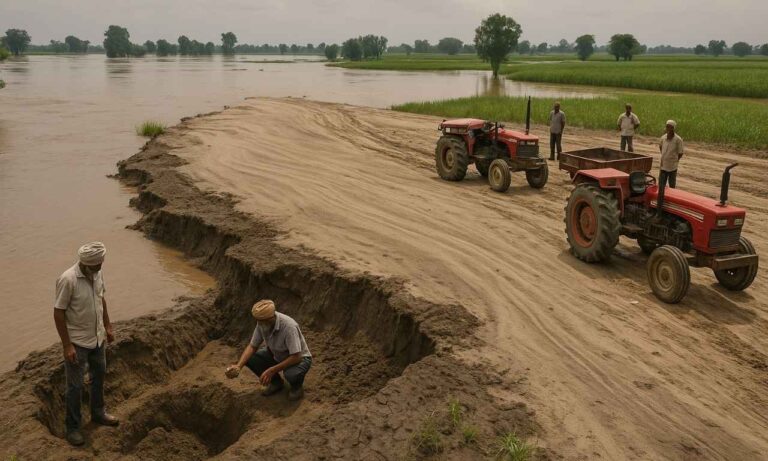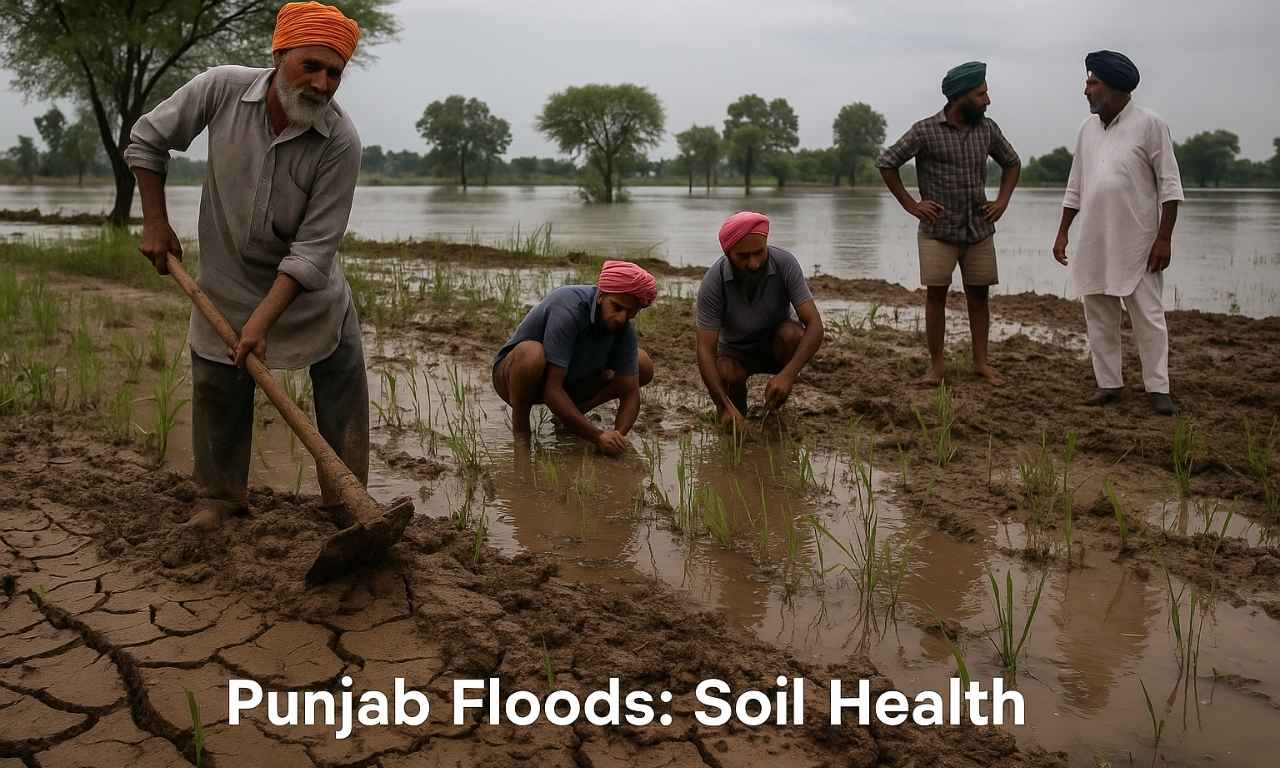Punjab recently witnessed one of its most severe floods in recent years, affecting all 23 districts and submerging nearly two lakh hectares of farmland.
Impact of Floods on Punjab’s Soil
- Floodwaters wash away the nutrient-rich topsoil, which contains vital elements like nitrogen, phosphorus, and organic carbon.
- Loss of this top layer weakens soil fertility, reducing crop output and increasing rehabilitation costs.
- Erosion also makes the soil structure unstable and prone to crusting and compaction.

Silt Deposition: Double-Edged Effect
- Floods bring silt, especially to river-adjacent and low-lying areas.
- Fine silt can improve soil texture and add minerals, acting as a natural fertiliser.
- However, excessive deposits can harden the soil, restrict root penetration, and disrupt microbial balance.
- Experts suggest mixing shallow silt layers (2–3 inches) with local soil through normal tilling for fertility restoration.
Findings from Soil Tests
- Punjab Agricultural University (PAU), Ludhiana, conducted soil assessments in flood-hit regions.
- Tests revealed:
- Leaching of nutrients, especially nitrogen.
- Temporary imbalance in pH due to waterlogging.
- Drop in organic matter where topsoil was lost.
- Scientists believe that fertility can be restored through deep ploughing, organic manure, and fertiliser application based on soil test results.
Recovery and Management Strategies
- The recovery plan depends on soil type and depth of silt:
- For 2–3 inch silt layers: simple ploughing is sufficient.
- For deep or compacted deposits: mechanical removal or deep chiselling is advised.
- Adding compost or green manure improves soil aeration and microbial activity.
- Farmers are advised to control weed growth, a common post-flood problem.
- The state’s policy, “Jisda Khet, Usdi Ret” (the sand belongs to the landowner), allows farmers to sell deposited sand/silt without special clearances, helping both soil recovery and income support.
Prospects for the Rabi Season
- Agricultural experts believe most farmers can resume wheat cultivation on schedule if early field management is done.
- In moderately affected areas, residual flood moisture may help germination without pre-irrigation.
- For low-lying zones, bed planting of wheat, gobhi, or mustard is suggested.
- Short-term crops like toria, potato, or maize can be cultivated before wheat in some regions.
Conclusion
While Punjab’s floods caused serious damage, the state’s soils remain recoverable with prompt scientific management. Through soil testing, organic amendments, and community-level interventions, Punjab can restore soil health and sustain its agricultural resilience in the coming rabi season.
This topic is available in detail on our main website.





